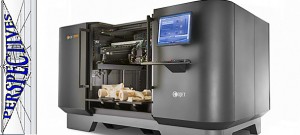
OPINION – Hollywood has taught the nonshooting public an awful lot about firearms. Too bad almost none of it is true.
Thanks to decades of action films, we all know that anyone shot with a 12-gauge shotgun will be blasted off their feet and smash through a plate glass window. We know that a peripheral gunshot wound can be shrugged off as a scratch; so long as it’s inflicted on an essential character.
Spraying a handgun bullet with Teflon will make it capable of penetrating bulldozer blades and any known body armor. And, most distressing of all, terrorists favor “undetectable” plastic handguns that can evade any known security screening.
That last bit of conventional wisdom has terrified members of Congress for more than a quarter of a century now.
In 1988, the Terrorist Firearm Detection Act outlawed the creation or possession of plastic firearms. In 25 years, no crime has been committed with a plastic gun. Of course, it helps that no such guns existed for most of the time this law was in effect. Congress might as well have outlawed vampire attacks and boasted about a similar record of success.
It was a classic example of politicians pretending to do something about a problem that never actually existed.
Now the Firearm Detection Act is about to expire and the hysteria is once again being cranked up in Congress. But this time around, there is a difference. Thanks to the efforts of an innovator named Cody Wilson, a 3-D printable handgun is a reality. But is it the threat that regulators make it out to be?
When the Glock polymer frame handgun was unveiled in the 1980s, it sparked concerns that it would become the undetectable choice of terrorists. This was a physical impossibility since each Glock contained over a pound of metal and was readily detectable.
The innovative design, lighter weight, and high reliability made the Glock line of handguns highly popular with the shooting public. They have also become extremely popular as the duty weapon of a majority of law enforcement agencies across the country. The controversy was entirely unnecessary.
In a similar sense, fears 3-D printed handguns will become the tool of choice for criminals or terrorists are also being greatly overstated.
While thousands of individuals downloaded the data for printing Cody Wilson’s single shot Liberator handgun, it makes almost no sense for any criminal or terrorist to do so. There are plenty of very well made handguns available through public or private channels for anyone who has the money and the desire to purchase one.
No self-respecting hood or radical is going to give up proven, standard capacity designs for a single shot model that requires a $10,000 printer to create. If anonymity is the primary goal, he can always make a private purchase from someone specializing in “previously owned” firearms sold out of a car trunk.
The danger of allowing lawmakers to rush forward with plans to renew or expand the Undetectable Firearms Act is in how it may impact the many positive aspects of 3-D printing.
In addition to the headline-grabbing stories of printable firearms and components, 3-D printing is poised to revolutionize a number of other types of manufacturing. Rolls Royce will be utilizing 3-D printing to create parts for its jet engines. Bioengineers at the Cardiovascular Institute in Kentucky have said they’re on the cusp of being able to “print” a bioficial human heart from the patient’s own cells.
Apparently, 3-D printing has the potential to transform the way we make everything. Allowing government to entrench itself in the regulation of this new technology out of fears that someone might someday misuse it, is foolish.
There are too many regulatory nightmares that began innocently enough, yet allowed the proverbial camel’s nose inside the tent.
The 1988 act that sought to prevent the creation of invisible weapons did nothing to prevent the successful terror attacks of 9/11 or any other criminal mayhem. This law should be allowed to expire and then quietly buried out behind the barn.
The concerns over the ability of private citizens to create plastic firearms with 3-D printing are being grossly exaggerated as an excuse for more laws and more government regulation. The printed guns are not invisible, nor are the ammunition components undetectable. The controversy is as manufactured as a Hollywood shootout.
The benefits of what we might gain from advances in 3-D printing far outweigh the realistic prospects of any dangers it may pose.
Bryan Hyde is a news commentator and co-host of the Perspectives talk show on Fox News 1450 AM 93.1 FM. The opinions stated in this article are his and not representative of St. George News.
Email: [email protected]
Twitter: @youcancallmebry
Copyright St. George News, SaintGeorgeUtah.com LLC, 2013, all rights reserved.

Not long ago they tried to make receivers for AR-15s with 3-D printers to prove how dangerous this technology could be in the hands of the public if left unregulated. They quickly found that the pressures created by the projectiles where too much for the material and ended up with nothing but a bunch of broken guns that where more dangerous to the shooter than anyone else.
Oh no! AR-15s in the hands of the public, whatever shall we do!?
Oh wait , my bad. I forgot that we can already buy them at Wal-Mart.
More overreach by our benevolent leaders. Every time they scream for more regulation it’s just a pretext for them to grab more power over us.